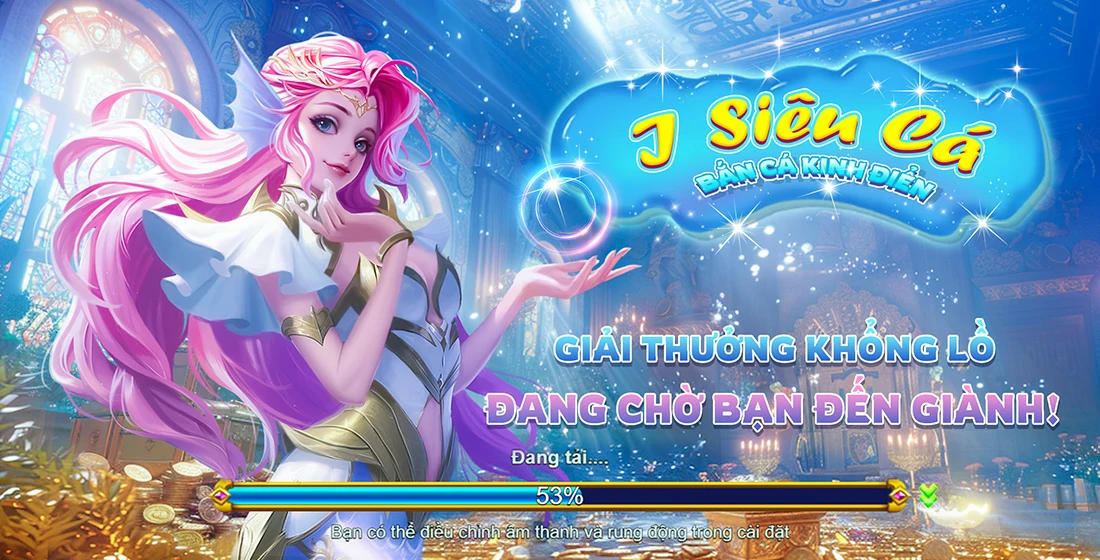Open World Games Are Reshaping Player Expectations
Imagine dropping into a digital universe with zero hand-holding, where the only compass is curiosity. That’s the core ethos of open world games. Players in Singapore and across Asia have seen a surge in immersive digital landscapes, from dense cyber-cities to lush alien terrains. Unlike traditional linear narratives, these games allow freedom—not just in movement, but in decision-making. You’re not on rails. You shape your arc.
Singaporeans love flexibility in all areas—commute, finance, food. Gaming’s no exception. Titles like Assassin’s Creed Valhalla or Genshin Impact tap into that preference. These environments don’t just look good—they breathe. Wildlife acts naturally. NPCs remember your past behavior. Weather shifts with regional realism. These subtle touches aren’t filler; they deepen engagement.
What Defines the Open World Experience?
An open world isn’t just big. Size means nothing without purpose. True open world games embed interactivity into terrain, weather, and society. Let’s break it down.
- Non-Linear Progression: You can ignore the main story and go farming in the mountains instead.
- Environmental Interactivity: Burning grass spreads, snowdrifts slow runners, animals react to noise.
- Dynamic Systems: Economy changes as players trade or mine rare ores; reputations follow actions.
- Emergent Gameplay: Two systems clash—a sandstorm knocks out radio comms, creating unplanned stealth opportunities.
That last one? Emergent gameplay. That’s gold. When players write stories without the devs scripting them. Think of it as the digital equivalent of chaos engineering.
Hyper Casual Games Serve a Completely Different Appetite
Suddenly your phone dings—commute time, work slump, cooking dinner. Enter: hyper casual games. They’re not trying to dazzle you with lore or epic quest arcs. In fact, they’re built to last less than two minutes per session.
Games like Hole.io or Flappy Bird dominate lunch breaks. Minimal rules, instant feedback, one-thumb operation. They thrive in high-attention-competition zones—places like Orchard Road MRT or kopitiam queues where attention is fractured.
You don’t “progress" in them—you survive the moment. No skill trees, no inventories. Pure reflex loops. But behind the simplicity? Brutal retention math and micro-experiment design only giants like Voodoo or SayGames execute at scale.
The Mental States They Trigger Are Totally Different
Ever finish an open world session feeling emotionally spent? Maybe you just escaped a sand dragon while rescuing a nomad tribe in a fictional Sahara. That's investment.
Compare that to a 30-second round of Stack Jump, where you lose after seven blocks. Annoyed? Yeah. Do you quit? Nope. You retry instantly.
Here’s the psychological divide:
| Metric | Open World Games | Hyper Casual Games |
|---|---|---|
| Session Length | 30 min – 2+ hours | 30 sec – 3 min |
| Cognitive Load | High (multitasking) | Low (reaction-based) |
| Reward Type | Delayed (story, upgrades) | Immediate (points, visual pop) |
| User Intent | Escape / Adventure | Dopamine Spike |
Monetization Models: From Subscriptions to Micro-Rage Clicks
Open world games lean heavy on upfront cost or subscription models. Some, like Final Fantasy XIV, thrive on monthly fees. Others, especially gacha-based RPGs, rely on deep player attachment—cosmetic items, mounts, crafting licenses.
Hyper casual, though? Entirely ad-driven. Interstitials after game overs, rewarded videos for second chances, playable banners in app stores. The business logic is simple: volume over loyalty. One ad earns $0.01? Show it 10 million times. Profit scales fast.
Their success hinges on low friction + high replayability. And surprisingly, Singapore has emerged as a regional testbed for ad-optimization due to high mobile adoption and fast network speeds.
The Dev Gap Between These Genres Is Massive
Building The Legend of Zelda: Breath of the Wild takes years. Hundreds of engineers. Thousands of art assets. Budgets over $50 million.
In contrast, hyper casual games are prototyped in a week. If retention at day-one drops below 35%, it’s scrapped. No sentimentality. No sequels. Just data.
Team structure tells the story:
- Open World Studios: 100–300 members; roles span AI scripting, physics tuning, narrative design.
- Hyper Casual Teams: 3–8 devs; focus is on core loop and monetization funnel.
Their tools differ too. AAA titles rely on Unreal or proprietary engines. Hyper casual studios often use lightweight tools like Cocos2d or Buildbox.
Player Skill Is Rewarded Differently in Each Genre
Here’s a strange irony: in hyper casual, winning isn't tied to expertise. Sure, faster reflexes help, but outcomes are often RNG-heavy. Lose ten times? Just might win the eleventh with no skill gain. That's design on purpose.
In open world games, skill compounds. Learning weather patterns affects hunting success. Memorizing patrol routes changes infiltration tactics. Progression isn't handed out—it’s earned through patience and adaptation.
Singapore gamers often bridge both worlds—hardcore in the evening, finger-jamming during tea breaks. This dual engagement isn't random. It mirrors modern urban pacing: deep focus sandwiched between fragmented moments.
Cultural Influence: Why Singapore Is a Unique Market
You might not realize it, but Southeast Asia—and especially Singapore—sits at a digital gaming inflection point.
On one side, there’s appetite for global RPGs and exploration games. Genshin Impact? Huge locally. Its open regions feel vast but balanced. On the other hand, hyper casual thrives because daily commutes average 70 minutes in Singapore—one swipe can fill a 30-second lull.
The blend of English fluency, tech adoption, and mixed living density creates perfect conditions for both genre explosions. And culturally, the preference for efficiency resonates in quick-game mechanics. Wasting time feels unacceptable. Even games must optimize value per second.
Hardware Considerations Can Make or Break the Experience
You can’t play Red Dead Redemption 2 smoothly on an entry-level device. Open world games demand GPU horsepower, cooling, RAM. Most require mid-tier to flagship phones, or dedicated consoles.
Not so for hyper casual. A five-year-old iPhone can run Crowd Run 3D flawlessly. These are optimized for mass distribution, including lower-income regions where high-end phones aren't standard.
That accessibility gap matters. While Singapore leans toward higher-end hardware, the regional distribution across Southeast Asia influences global strategy. Developers often launch hyper casual universally while limiting AAA titles to developed markets.
Can These Genres Ever Converge?
What if you combined the vastness of an open world with the tap-driven simplicity of hyper casual?
Potential hybrids are emerging—especially in AR mobile titles. Imagine walking Singapore’s Botanic Gardens, your phone showing a live-layered world where tapping flora spawns micro-quests.
But real fusion faces hurdles:
- Cognitive clash: Open worlds reward patience. Hyper casual punishes downtime.
- Monetization incompatibility: One relies on time investment, the other on ad frequency.
- Pacing dissonance: A sudden ad break ruins immersion in a dramatic open world scene.
Possibility? Yes. Practical? Not yet. At least not without sacrificing one genre’s soul.
Battle Royale Games: A Third-Way Hybrid?
Skip to the battle royale format: PUBG Mobile, popular in Singapore, has an open map—but session structure is hyper-casual friendly. Matches cap at 20 minutes. Rules are minimal. You drop, loot, fight, survive.
These sit somewhere in the spectrum:
- Map freedom = open world trait
- Rounds & quick respawns = hyper casual pattern
This balance makes them perfect for regional play patterns. Commuters hop in for one match, exit with results. No guilt, no backlog. It's structured spontaneity. A bridge between deep play and instant gratification.
Why “The Best Base in Clash of Clans" Matters in This Discussion
The best base in Clash of Clans? Seems out of place, right? Stick with me.
Clash of Clans isn’t open world. Not hyper casual either. It's mid-core—where player investment meets incremental strategy.
But here's the twist: players obsess over optimal base layouts not because of aesthetics, but survival. Your village isn't just a hub; it's an evolving response to attack algorithms and troop trends. It’s meta gameplay at scale.
In essence, base design mimics the *planning* phase of open world mastery—but in a container small enough for micro-sessions, like a hyper casual rhythm. You check it between meetings. Tweak a cannon. Done. Yet that tiny action ties into months of progression.
That hybrid nature is precisely why Supercell's title survived 10+ years. It borrows the best from both genres.
Unexpected Real-World Use: What to Pair with Potato Soup?
Wait, what does something to go with potato soup have to do with gaming? Not directly, of course. But bear with a lifestyle tie-in.
Gaming isn’t isolated. What’s beside your device—food, light, sound—alters experience quality. In colder regions (or over-air-conditioned rooms), a warm bowl of potato leek soup hits differently mid-raid.
So what pairs well?
- Crusty bread: Soaks the cream, crunch breaks monotony.
- Gherkins: Acidic bite wakes taste buds—like a sudden game alert.
- Spiced grilled chicken: Adds protein to fuel focus during long sessions.
Odd as it seems, sensory alignment matters. A gamer in a high-stakes base-building session shouldn’t feel sluggish from heavy pasta. Light, warm, responsive meals support reactive play. Think of it as ergonomics—but for digestion.
Retention Patterns Expose Hidden Player Psychology
Data from app tracking firms reveal Singapore’s retention peaks at very different times based on genre.
Open world titles retain players strongest between 8 PM and midnight. Prime escapism hours. Emotional investment climbs.
Conversely, hyper casual spikes occur during transit windows—7:30–9 AM, 5:30–7 PM—and post-meal slumps (1–2 PM).
Even deeper:
- Weekly open world players are 3.2x more likely to make in-app purchases than daily session users of hyper casual titles.
- Hyper casual has 58% higher uninstall rates after three days if day-one retention drops below 40%.
The message? Long-term emotional hooks pay off monetarily, while hyper casual lives on viral virality and algorithmic promotion.
Gaming Culture in Singapore: The Big Picture
Singapore’s gaming scene defies easy categorization. You’ll see high schoolers speedrunning on mobile during bus rides, and adults hosting PS5 multiplayer nights weekly.
It's not a “one size fits all" market. Instead, segmentation reigns:
- Casual users prefer hyper minimal engagement.
- Nostalgia seekers gravitate toward RPG classics re-released.
- Competitive players focus on ranked systems and base defense (see: the best base in Clash of Clans).
Government regulations remain conservative—loot boxes face scrutiny. Yet overall sentiment? Positive. With the rise of local esports and streaming, gaming is losing its "distraction" label and earning respect as creative recreation.
Key Takeaways for Developers and Gamers
If you’re designing a mobile game for the Singapore region, consider:
| Factor | Open World Focus | Hyper Casual Focus |
|---|---|---|
| User Engagement | Emotional investment, long arcs | Frequent, micro-interactions |
| Battery Impact | High — optimize for breaks | Low — ideal for quick bursts |
| Network Stability | Critical (large data syncs) | Tolerant (lightweight syncs) |
| Best Launch Strategy | Marketing-heavy, demo first | App store virality + ads |
Crucial Points:
- Context defines genre preference. Where and when the game is played matters more than its design alone.
- No genre is "superior." Each meets distinct psychological and lifestyle needs.
- Base design in mid-core titles bridges strategy and accessibility—look no further than the best base in Clash of Clans trends.
- Player diet? Consider real-world comfort items, like warm soup with sides that support alertness—not sluggishness.
- Singapore's blend of infrastructure and discipline fosters unique usage patterns ripe for data mining.
Conclusion
The clash between open world games and hyper casual games isn’t just about budget or visuals—it’s a philosophical difference in human engagement.
One invites you to lose yourself in a universe that responds to every whisper of your actions. The other serves micro-hits of fun during life’s in-between gaps. They don’t compete. They coexist, often within the same player, across different times and moods.
And as for that search for something to go with potato soup? It reminds us: gaming doesn’t happen in isolation. Real-life habits feed digital experiences. Warm food, cool devices, fast networks—it’s all part of the stack.
For developers eyeing the Singapore market: build not just for specs, but for rhythm. Rhythm of daily life, commute cycles, social habits. Understand when your game appears in a day—and why. The rest, from monetization to retention, flows naturally.
In the end, it’s not just about mechanics or metrics. It’s about matching play style to living style. And in fast-moving cities like Singapore, that alignment determines whether a game survives—or gets left in the dust after 48 hours.



